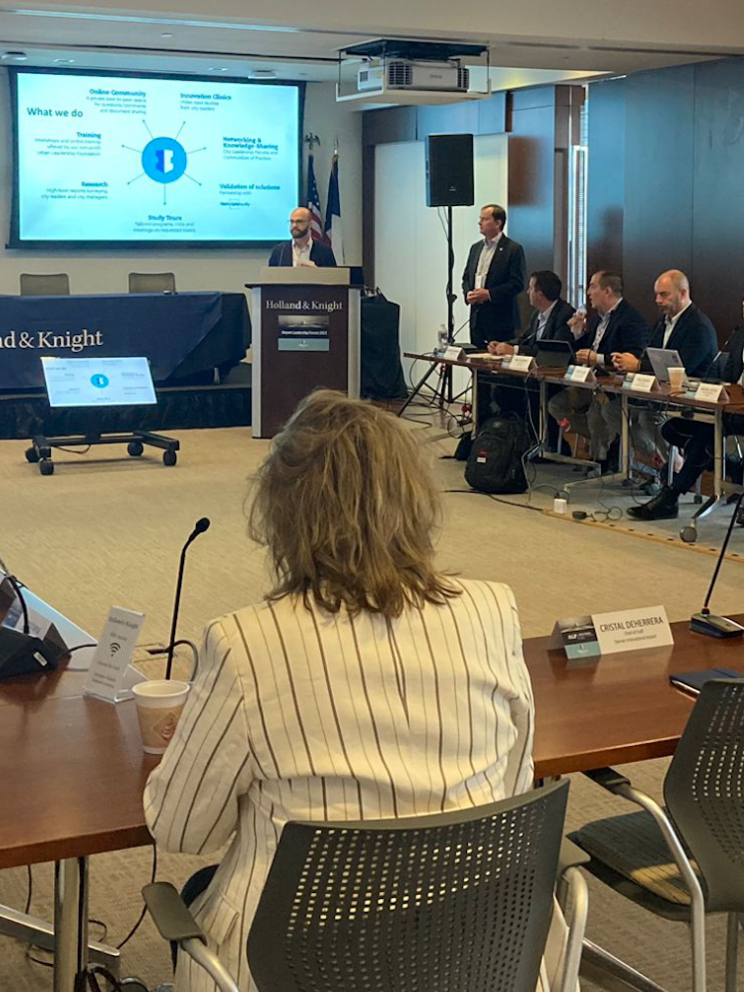
Dott accelerates electrification to support city climate goals
09 October 2025
by Jonathan Andrews
Three out of every four shared bikes and scooters in Europe are now electric, Dott says, which marks a defining moment for how cities move.
Maxim Romain (pictured), Co-Founder and President of Dott, said in an extensive interview with Cities Today that the company sees electrification as the most significant development in the sector in recent years.
He said about 40 percent of shared bikes are now e-bikes and that pedal bikes will continue to play a role but “become rather a niche complementary product.”
This transition, Romain said, reflects growing demand for reliable, low-emission transport and stronger policy support from cities. Electrification, he noted, is not only improving performance and rider comfort but also helping municipalities meet climate targets.
Next-generation vehicles
To keep pace with this evolution, Dott is rolling out a new generation of shared bikes and scooters designed to last longer, operate more efficiently, and better serve a wider range of users. Six thousand of the new models have already been deployed in Paris, with tens of thousands more due to follow across Europe in the coming months.
The updated design focuses on durability and comfort, particularly for women, while lowering operating costs through simpler maintenance.
“We’re excited because these vehicles are lighter, easier to handle, and more robust, allowing us to increase adoption while cutting emissions,” Romain said.
The company’s goal is to reduce emissions to 20 grams of carbon dioxide equivalent per kilometre. Extending vehicle lifespans through refurbishment and reuse, he added, is a key part of Dott’s circular approach.
Navigating a fragmented market
Despite progress, Dott and other operators continue to face barriers to scale. Romain pointed to Europe’s patchwork of national and local regulations as a major obstacle.
“We need this consistent market of the European Union,” he said. “Technical standards vary–Poland restricts scooter weight to 30 kilograms, the Netherlands requires mirrors, Norway limits length, and Germany requires a vehicle homologation and licence plates. It’s a fragmenting and fragmented market, and that’s causing a big headache and big costs to operators like us.”
Parking rules can also make or break local operations. Overly limited parking areas, especially near stations and transit hubs, lead to congestion and costly rebalancing.
“If you have limited or too small parking spaces allocated, you constantly have an over-saturation of vehicles,” he said. “The resulting extra rebalancing needs are a big, big cost driver.”
Romain believes these challenges can best be solved through cooperation through a constructive dialogue with local authorities ensuring that there is appropriate space and capacity.
Strong partnerships, steady growth
Dott’s strongest markets are in France and Belgium, where cities such as Lyon, Bordeaux, Brussels, and Paris combine solid infrastructure with clear frameworks for operation.
“Success comes where cities take an active, balanced approach–neither too many nor too few operators, clear parking policies, and supportive mayors who recognise the value of shared mobility,” Romain said.
By contrast, laissez-faire cities that leave operators without guidance or investment struggle to manage systems effectively. Romain said that Dott’s partnerships in Düsseldorf, Aachen, and West of England Combined Authority show the value of open communication and realistic expectations around costs and operations.
“They help us operators through continuous and open-minded dialogue,” he said. “They treat us as partners and not just as command receivers.”
Regulation and market maturity
Across Europe, shared micromobility use continues to grow but at a steadier pace than in previous years. Romain attributes this partly to new regulations and political sensitivities. “At the high level, we see a continuous but slower growth in Europe for shared micro mobility,” he said. “Partly due to some challenging local regulations including some bans on e-scooters, some fleet caps of large markets and helmet laws.”
The result, he said, is a maturing market that rewards quality and collaboration over rapid expansion. “We really see this fragmentation of legislation,” he added. “In some markets in the past, operators had to exit due to the complexities and too high costs of local regulations.”
Despite the challenges, Dott remains optimistic. The company expects the total number of shared micromobility rides in Europe to nearly double by the end of the decade.
“When we look at shared micro mobility, I expect in five years’ time, say in 2030, that we are somewhere in the ballpark of one billion rides–so nearly doubling the number of rides,” Romain said.
He expects new incentives and funding mechanisms to accelerate this growth. “We think that there will be budgets made available for people that are giving away their cars… or public transport pass holders that can purchase shared micro mobility passes with companies like ours,” he said.
Still, regulatory consistency will be crucial. “Regulations can have an enormous impact on the profitability of schemes and operators,” he said. “Some markets in the past had to exit due to the complexities and cost of local regulations. We need frameworks that reward sustainability and reliability, not punitive complexity.”
For Romain, the key to unlocking the next phase of growth lies in collaboration between cities, operators, and users.
“Ultimately, shared micro mobility helps cities achieve their sustainability goals,” he said. “That’s where our focus will always be.”
Image: Dott









